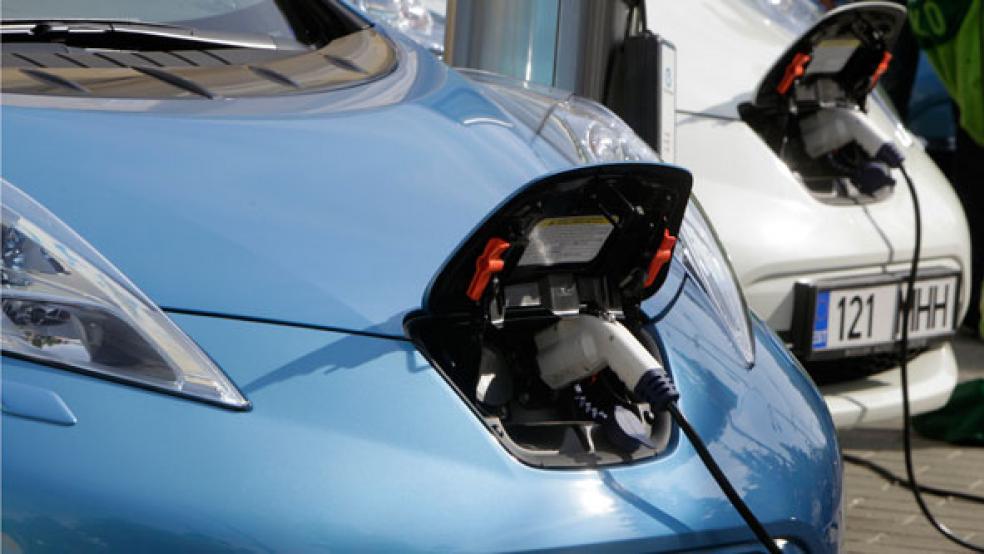U.S. researchers are reporting breakthroughs in artificial photosynthesis that could result in a new source of renewable liquid fuels for cars, ships and planes.
Renewable liquid fuels would be a welcome alternative to electricity for powering vehicles, because batteries are heavier than fuel and take up more space, which can work for cars but makes them impractical for planes or ships.
Artificial photosynthesis seeks to mimic the action of plants in capturing energy from the sun to produce biomass by breaking down water and combining it with carbon dioxide.
A team of scientists from the Lawrence Berkeley National Laboratory and the University of California-Berkeley in April reported “a potentially game-changing breakthrough” which uses nanowire technology and bacteria to convert carbon dioxide emissions into biosynthetic intermediates that can be used in plastics, pharmaceuticals and liquid fuels.
Related: This Innovation Can Recharge Electric Car Batteries in Minutes
“We believe our system is a revolutionary leap forward in the field of artificial photosynthesis,” Peidong Yang, a chemist with Berkeley Lab and one of the leaders of this study, said in a statement announcing the advance. “Our system has the potential to fundamentally change the chemical and oil industry in that we can produce chemicals and fuels in a totally renewable way, rather than extracting them from deep below the ground.”
The added bonus is that the process captures carbon dioxide emissions from fossil fuels before they are vented into the atmosphere, providing an alternative solution to the problematic challenge of carbon capture and sequestration from plants that burn coal and other fossil fuels.
“In our system, nanowires harvest solar energy and deliver electrons to bacteria, where carbon dioxide is reduced and combined with water for the synthesis of a variety of targeted, value-added chemical products,” explains Chris Chang, a Berkeley Lab expert in catalysts for carbon-neutral energy conversions.
The system starts with an “artificial forest” of nanowire heterostructures, consisting of silicon and titanium oxide nanowires. This forest of nanowire arrays is populated with microbial populations that produce enzymes known to selectively catalyze the reduction of carbon dioxide.
Related: What Tesla’s Home Battery Means for Your Electric Bill
The nanowire array “protects the bacteria like Easter eggs buried in tall grass,” the press release colorfully explains, enabling them to survive even in an environment like flue gas.
The Berkeley Lab project is one of several worldwide seeking to harness photosynthesis for renewable energy.
Scientists at the California Institute of Technology, for instance, have created a lab scale device for converting sunlight into fuel at a much greater efficiency than natural photosynthesis in plants, according to a post last month on the
Science Behind Sustainability Solutions blog sponsored by Arizona State University in the Guardian.
The goal is to use artificial photosynthesis to produce methanol, a simple hydrocarbon that is already widely used in gasoline mixtures.
Related: Why You Won't Be Driving an Electric Car in 2040
Despite the breakthroughs, the challenge remains to develop a process that is affordable and can operate on a commercial scale. One of the most efficient and stable catalysts for splitting water into its hydrogen and oxygen components, Guardian contributor Debbie Carlson notes, is platinum, one of the most costly elements on the planet.
Another research project, at the Solar Fuels Institute at Northwestern University, is developing a prototype to combine the processes of splitting water and carbon dioxide into their respective components, which current methods do separately.
These researchers hope to bring their technology to market within five years, Carlson reports.
If liquid fuel could be produced on a commercial scale within five to 10 years, the technology could pose a challenge for the nascent electric-vehicle industry.
Caltech and Berkeley Labs collaborate on research in the Joint Center for Artificial Photosynthesis (JCAP), an energy innovation hub established in 2010 and funded by the U.S. Department of Energy.
In April, the DOE announced a $75 million renewal of funding for another five years.
“JCAP’s work to produce fuels from sunlight and carbon dioxide holds the promise of a potentially revolutionary technology that would put America on the path to a low-carbon economy,” Under Secretary for Science and Research Lynn Orr said in a statement.
This article originally appeared on OilPrice.com.
Read more from OilPrice:
Who Will Take The Energy Storage Crown?
Electric Vehicles To Become Mainstream In Short Period Of Time
Forget The Noise: Oil Prices Won’t Crash Again




